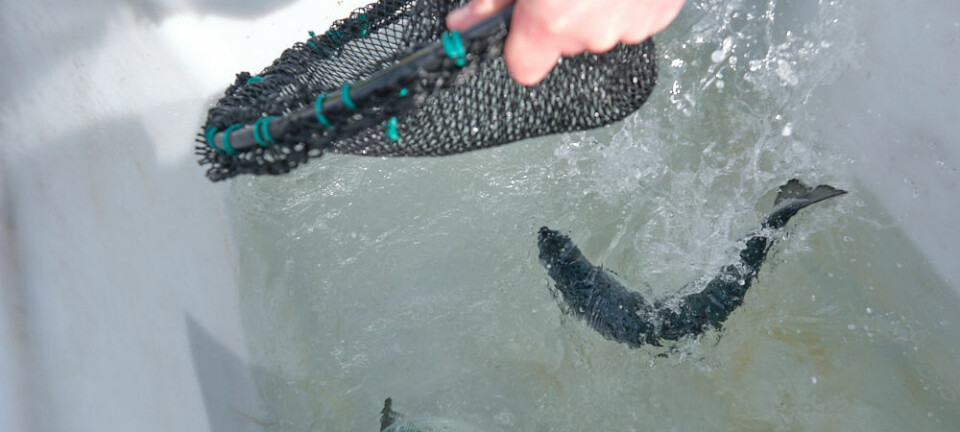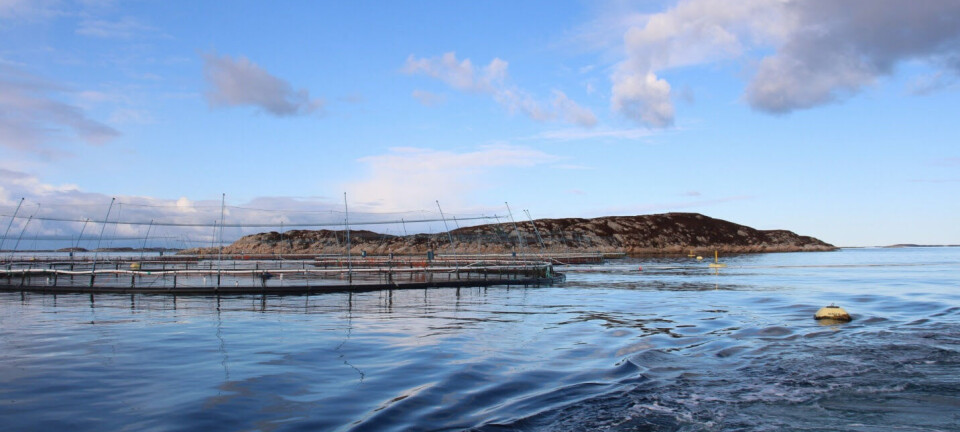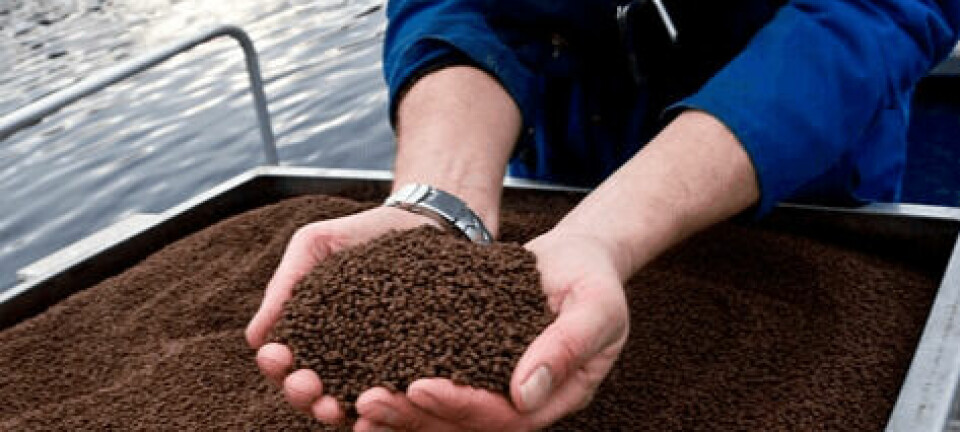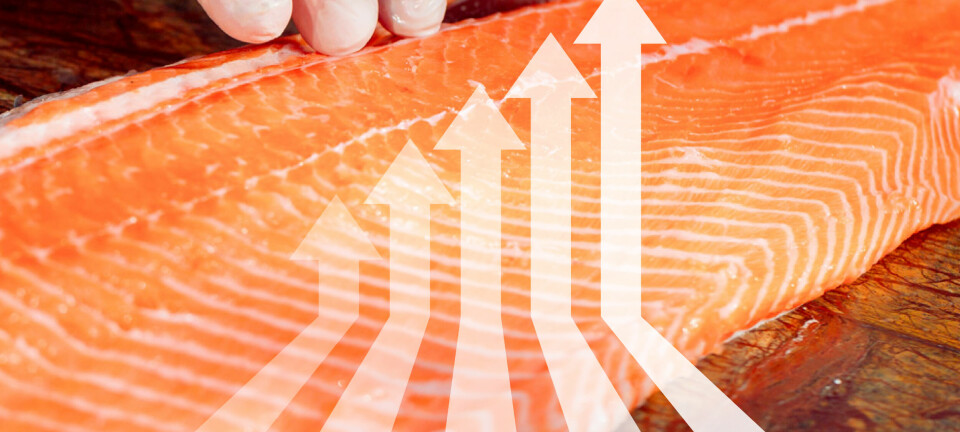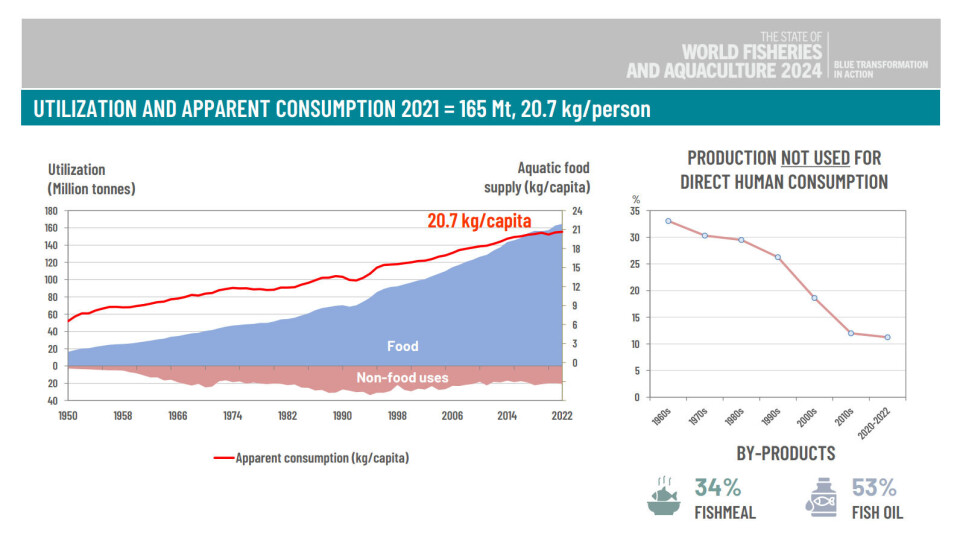
More fish are caught and farmed, and humans are getting a bigger share
The percentage of fish not going to direct human consumption has fallen by two thirds since the 1960s, a senior United Nations official has said.
The proportion of fish not used for direct human consumption has decreased from 33% in the Sixties to 11% in 2022, Audun Lem, deputy director of the Fisheries and Aquaculture Division at the UN’s Food and Agriculture Organisation, told a members’ meeting of marine ingredients organisation IFFO last week.
Seafood production is at an all-time high, said Lem, adding that global aquaculture production of animal species reached 94.4 million tonnes in 2022, surpassing capture production (91 million tonnes) for the first time. Of that 94.4m tonnes of aquaculture animal species, 62.6% was farmed inland.
Despite its increased production, aquaculture still has a large gap to fill.
“With the world’s population being projected to reach 9.7 billion by 2050, if consumption of aquatic animal foods is to be maintained at current levels, the global supply would require a 22% rise,” said Lem.
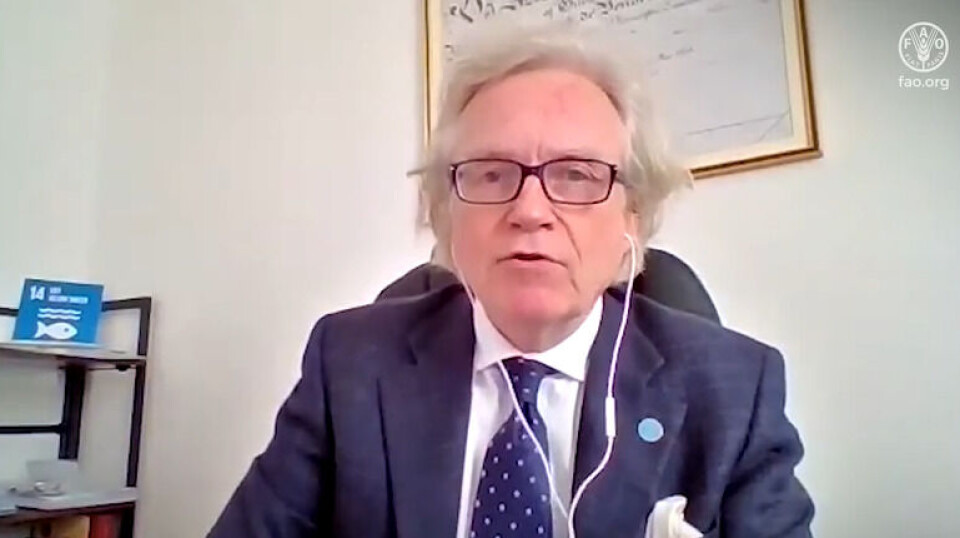
The demand for supply increases differs between regions because of current consumption rates and future population growth.
“In Africa, a 74% increase in aquatic food supply would be needed to keep up with current per capita consumption rates. Bringing Africa consumption rates to today’s global average of 20.7kg per person in 2050, would require a 285% growth in aquatic animal provision,” explained Lem.
More from by-products
The demand for marine ingredients from aquaculture and other sectors is increasingly being met by more efficient processing methods. Lem told the meeting that 34% of fishmeal and 53% of fish oil is now being produced from by-products.
Asia remains the dominant force in aquaculture production, accounting for 92% in 2022. It isfollowed by Latin America and the Caribbean at 3.3%, and Europe at 2.7%.
“We have to communicate that the volumes of the catches coming from sustainably managed stocks, 77% in 2022, are much bigger. This shows that fishery management is working,” said Lem.
“This June at the UN Ocean Conference in Nice, France, FAO will launch an updated methodology on stock assessment. We have increased the number of stocks monitored by FAO, from 500 to 2,000, meaning that the information available on stock assessments will be much more precise and meaningful, with a breakdown on a more precise sub-level.”
Read the key takeaways from Day 1 of the IFFO members' meeting here and Day 2 here.


